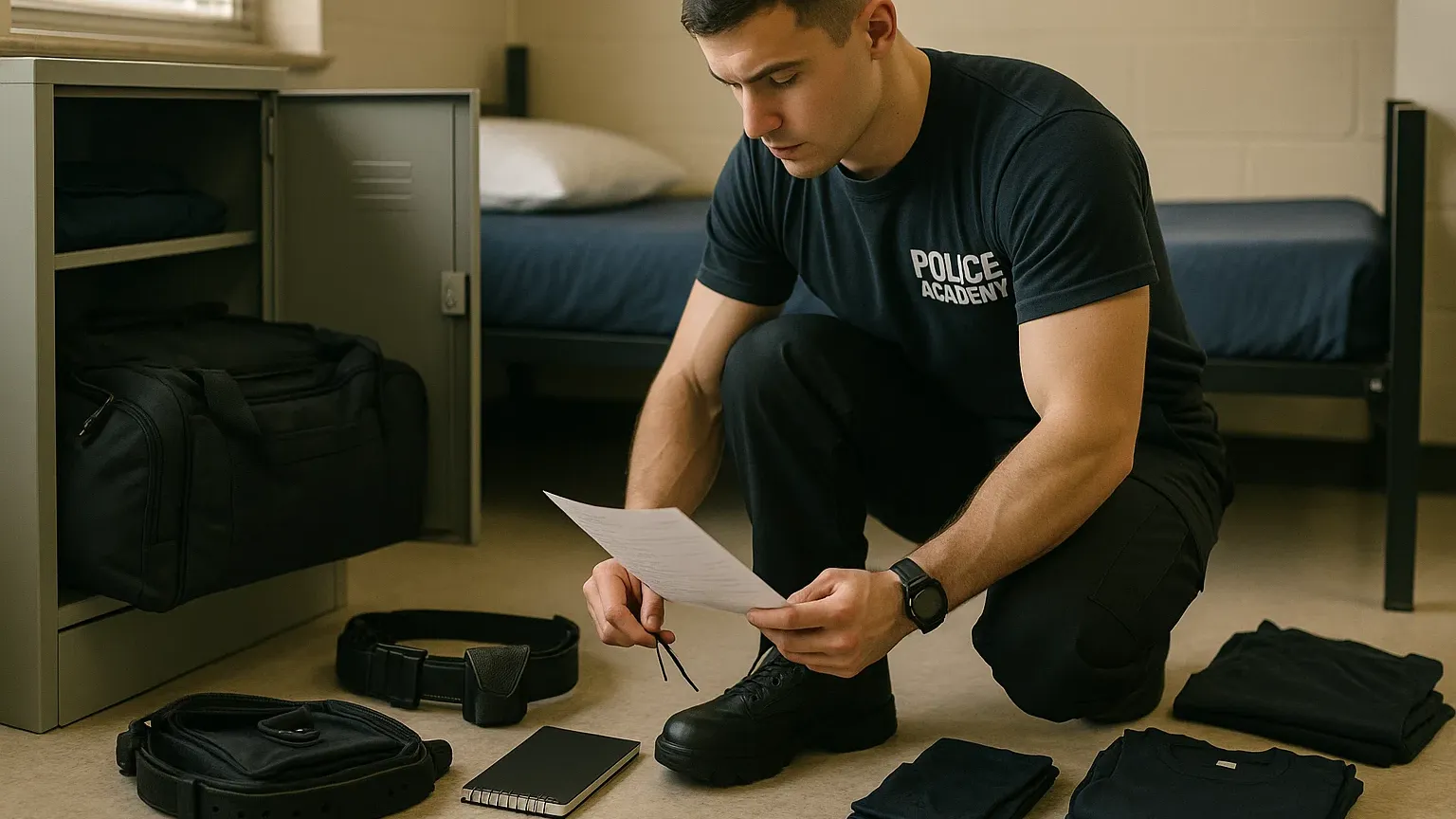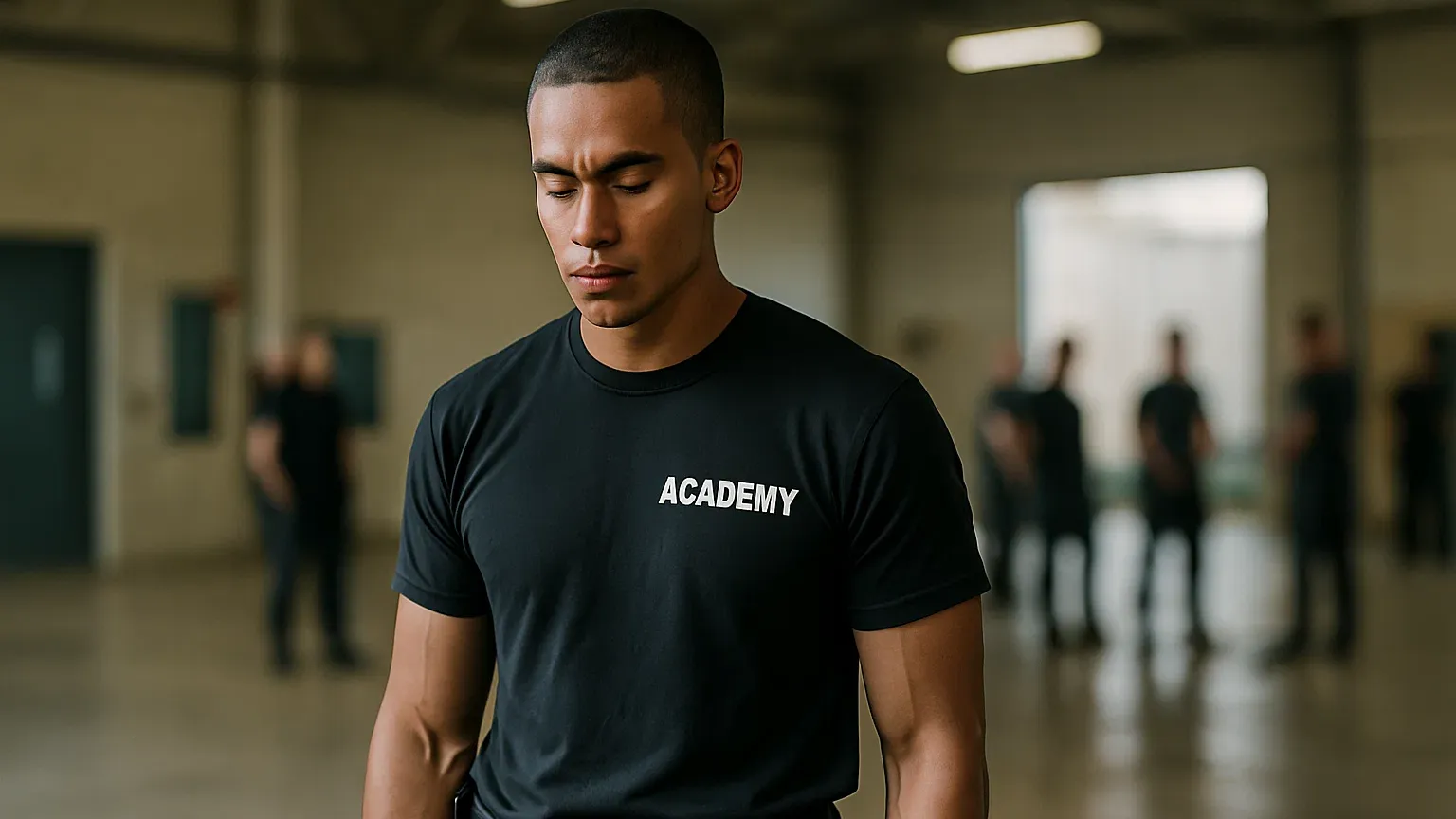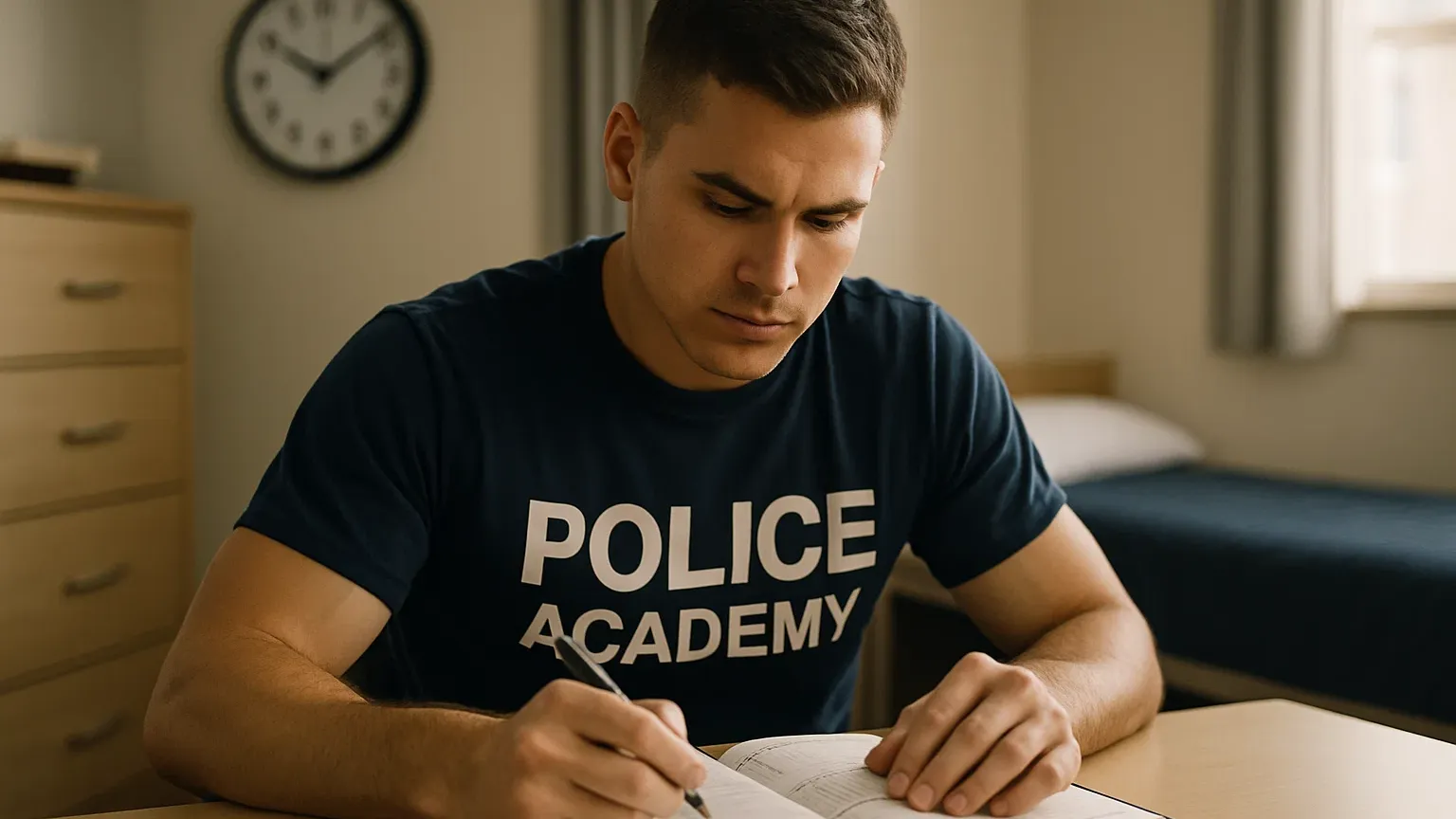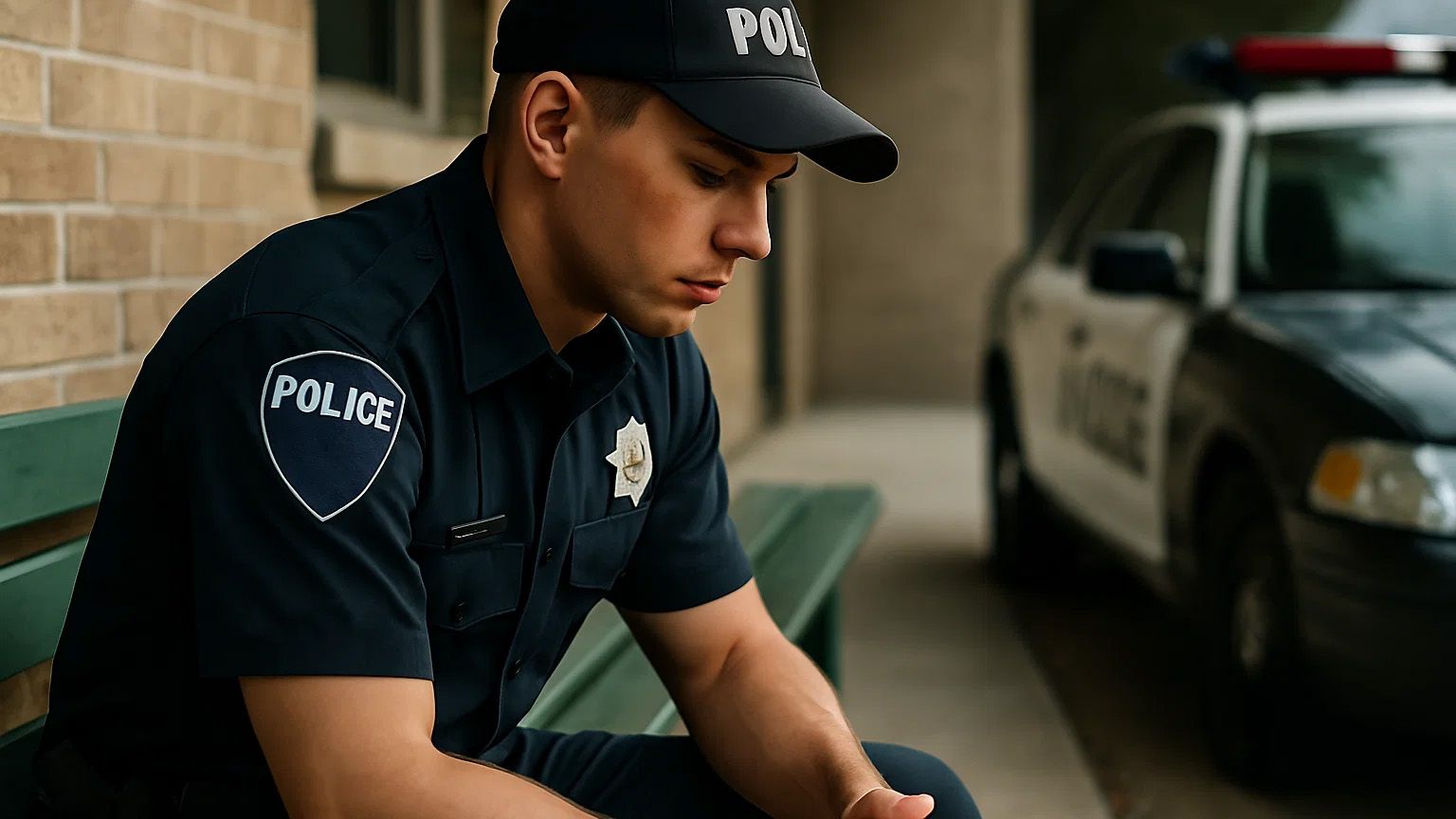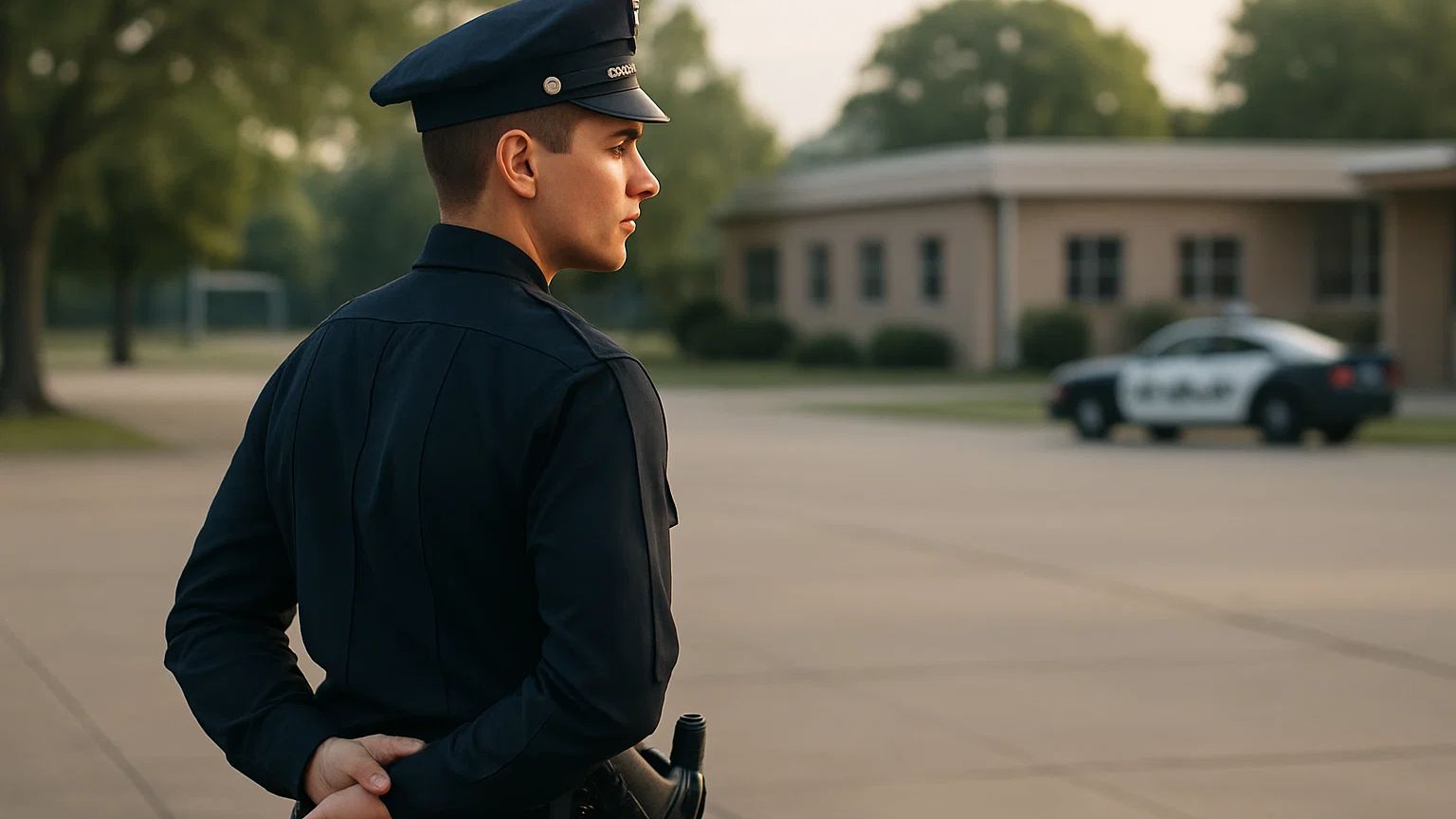Before you ever speak a word, people are already sizing you up. In uniform, your presence is your first tool. It can calm a tense situation—or ignite it. That’s why “command presence” is one of the most critical, yet overlooked, skills for aspiring officers.
Think of command presence like your prof...
You’ve made it into the academy—now it’s time to gear up. But showing up unprepared isn’t just a bad look—it can slow you down and send the wrong message from day one. Your equipment is your toolbox, and how you handle it says everything about your discipline.
Think of your gear like your first par...
From day one, the police academy is designed to test you—physically, mentally, and emotionally. It’s fast-paced, high-pressure, and deliberately intense. That stress isn’t an accident—it’s training. But if you don’t learn to manage it, it can quickly overwhelm you.
Think of academy pressure like a ...
In the police academy, there’s one resource more valuable than strength, smarts, or even sleep—time. You’ll be expected to learn fast, move faster, and keep up with a demanding schedule that doesn’t care how tired you are. If you can’t manage your time, you’ll fall behind—fast.
Think of time in the...
You can ace the physical test, shoot with precision, and memorize every law—but if your mind breaks under pressure, the rest won’t matter. Mental toughness isn’t a bonus in policing—it’s the foundation.
Think of your mindset like body armor. It protects you in high-stress situations, helps you stay...
Before you ever put on a badge, you need to understand one thing—your most powerful tool in law enforcement isn’t your weapon, your strength, or your training. It’s your integrity. Without it, nothing else holds weight.
Think of integrity like your internal compass. It won’t make your job easier, b...
You walk into a room. A panel of officers stares back. The questions start flying—and just like that, your future in law enforcement hangs on every word you say. Welcome to the police oral board interview: part interrogation, part conversation, and 100% high-stakes.
Think of the oral board like a c...
You’ve passed the written test, crushed the fitness trial, and made it into the academy—but now comes the real proving ground: scenario training. It’s where your book smarts and gym gains are put to the test under pressure, in real-time. And it’s where future officers are made—or exposed.
Think of ...
Before you earn the badge, you’ve got to earn your place—and the Physical Ability Test is where many hopefuls get stopped cold. It’s not about being a gym rat. It’s about functional strength, endurance, and grit. If you want to be a cop, your body has to be up to the job.
Think of the PAT like your...
You might be able to outrun, outlift, and outlast the rest of your academy class—but if you can’t pass the written exams, none of it matters. These tests can sneak up on even the fittest recruits, turning the academy into a mental minefield.
Think of the written exams like checkpoints on a long roa...
There’s a big difference between reading about police work and riding shotgun during a midnight patrol. A ride-along isn’t just a formality—it’s a front-row seat to the reality of law enforcement. And if you’re serious about becoming an officer, it’s an experience you can’t afford to skip.
Think of...
The sound of a gunshot can change everything in a split second—and as a future police officer, how you handle your firearm could mean life or death. But firearms training isn’t just about pulling the trigger. It’s about control, precision, and responsibility every single time.
Think of your service...


